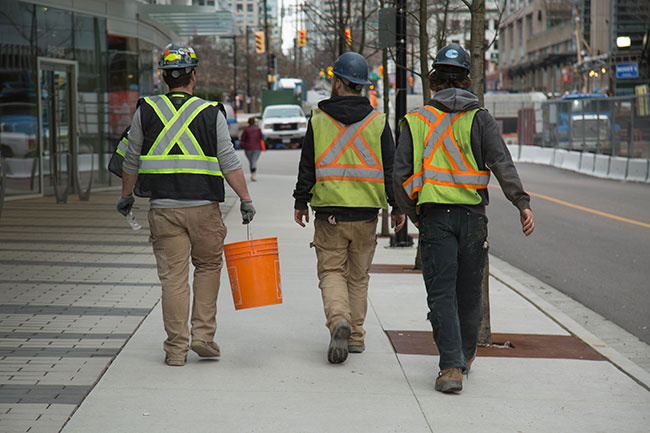

Features
Workforce Statistics
Nearly one millions jobs added in June, unemployment rate falls: Statistics Canada
By The Canadian Press

Statistics Canada says the economy added nearly one million jobs in June as businesses forced closed by the pandemic began to reopen.
The agency says 953,000 jobs were added last month, including 488,000 full-time and 465,000 part-time positions.
The unemployment rate fell to 12.3 per cent in June after hitting a record-high of 13.7 per cent in May.
As in May, even though more people found jobs, more people were also looking for work.
The average economist estimate for June had been for an addition of 700,000 jobs and the unemployment rate to fall to 12.0 per cent, according to financial data firm Refinitiv.
Statistics Canada says the unemployment rate would have been 16.3 per cent had it included in unemployment counts those who wanted to work, but did not look for a job.
Unemployment rates by province
Canada’s national unemployment rate was 12.3 per cent in June. Here are the jobless rates last month by province (numbers from the previous month in brackets):
- Newfoundland and Labrador 16.5 per cent (16.3)
- Prince Edward Island 15.2 per cent (13.9)
- Nova Scotia 13.0 per cent (13.6)
- New Brunswick 9.9 per cent (12.8)
- Quebec 10.7 per cent (13.7)
- Ontario 12.2 per cent (13.6)
- Manitoba 10.1 per cent (11.2)
- Saskatchewan 11.6 per cent (12.5)
- Alberta 15.5 per cent (15.5)
- British Columbia 13.0 per cent (13.4)
Unemployment rates by city
The national unemployment rate was 12.3 per cent in June. Statistics Canada also released seasonally adjusted, three-month moving average unemployment rates for major cities. It cautions, however, that the figures may fluctuate widely because they are based on small statistical samples. Here are the jobless rates last month by city (numbers from the previous month in brackets):
- St. John’s, N.L. 11.6 per cent (10.5)
- Halifax 11.9 per cent (10.5)
- Moncton, N.B. 9.1 per cent (8.8)
- Saint John, N.B. 11.5 per cent (11.1)
- Saguenay, Que. 12.9 per cent (13.3)
- Quebec City 11.9 per cent (11.9)
- Sherbrooke, Que. 11.6 per cent (10.9)
- Trois-Rivieres, Que. 12.6 per cent (13.0)
- Montreal 15.1 per cent (14.0)
- Gatineau, Que. 11.0 per cent (11.0)
- Ottawa 9.0 per cent (7.7)
- Kingston, Ont. 12.4 per cent (10.8)
- Peterborough, Ont. 9.5 per cent (9.5)
- Oshawa, Ont. 11.8 per cent (10.1)
- Toronto 13.6 per cent (11.2)
- Hamilton, Ont. 12.1 per cent (10.3)
- St. Catharines-Niagara, Ont. 12.9 per cent (12.6)
- Kitchener-Cambridge-Waterloo, Ont. 12.2 per cent (10.3)
- Brantford, Ont. 12.6 per cent (11.3)
- Guelph, Ont. 14.9 per cent (12.9)
- London, Ont. 12.6 per cent (11.7)
- Windsor, Ont. 15.2 per cent (16.7)
- Barrie, Ont. 10.8 per cent (11.6)
- Greater Sudbury, Ont. 9.4 per cent (8.4)
- Thunder Bay, Ont. 11.1 per cent (10.4)
- Winnipeg 11.7 per cent (10.3)
- Regina 11.6 per cent (10.6)
- Saskatoon 14.1 per cent (12.4)
- Calgary 15.6 per cent (13.4)
- Edmonton 15.7 per cent (13.6)
- Kelowna, B.C. 10.2 per cent (9.6)
- Abbotsford-Mission, B.C. 8.8 per cent (7.5)
- Vancouver 13.1 per cent (10.7)
- Victoria 11.0 per cent (10.1)
Print this page